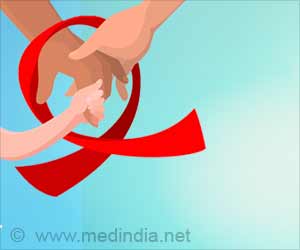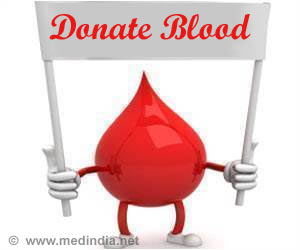Can you imagine the global AIDS Scenario minus India? This WAD is also an occasion to portray India as a great global saviour, especially the global south. India has played the greatest role in normalizing the AIDS Pandemic.Today HIV has become a chronic manageable disorder, even better than diabetes. We have adequate and efficient tools to end AIDS — to prevent HIV transmission, or diagnosing and treating PLHIV so that they can live healthy, fulfilling lives. We are progressing but not fast enough, to end AIDS by 2030. An array of ‘missed opportunities’ is plaguing the AIDS response in India. Factors like lack of accountability, sub-optimal programme effectiveness, and complacency are slowing us down from reaching the goal of an AIDS-free India. Covid-19 pandemic did play spoilsports, but we cannot continue blaming it for non-achievement of goals.
We can end AIDS by 2030 but the curve will not bend by itself. We could have achieved these goals had we succeeded in eliminating ‘missed opportunities’ in the AIDS response.We should have ensured that the full HIV combination prevention spectrum and complete care and support services were reaching everyone, including the key populations.We should have worked with a heightened sense of purpose and urgency to help prevent HIV transmission and avert AIDS deaths. We have a robust ART that results in undetectable virus within just two months: ‘undetectable is untransmittable’.
Advertisement
And we have gone one step beyond — untransmittable means zero. So, each new HIV case is a ‘missed opportunity’ where a range of combination prevention options could have helped prevent the person from getting infected.Likewise, every AIDS-related death is a grim reminder that it could have been averted because we have proven tools to make ‘AIDS death’ a history.By 2025, 95 percent of all PLHIV should have a diagnosis, 95 percent of them on ART and 95 percent of those on ART should be virally suppressed. India had 2.5 million PLHIV in 2022, including 70,000 children.Alarmingly, 66,000 people were newly infected in 2022, 180 new infections daily, slight increase since 2021. Sadly, there were 32,000 AIDS-related deaths in 2022 — hourly 4 deaths, though it has reduced by 25 percent over last year.In the journey towards end AIDS goals, one of the first milestones has to be elimination of parent to child or vertical transmission of HIV, as that doesn’t even need change in behavior.
India, is yet to achieve this goal. ART coverage of pregnant women; which can prevent transmission to an unborn child during pregnancy or breastfeeding was 64 percent. Vertical transmission rate including during breastfeeding 24.3 percent. This is another ‘missed opportunity’ which we cannot afford to ignore if we are to end AIDS by 2030.India’s HIV prevalence peaked in 2000, showing a continuous decline during the past two decades with 0.55 percent in 2000, to 0.32 percent in 2010 and 0.21 percent in 2021. However, we have seen a resurgence in HIV with an increasing number of new infections, especially in young people along with a rising trend in Sexually Transmitted Infections (STIs) with HPV, Hepatitis B, syphilis on the rise.
Data-backed science has long raised the alarm on low coverage of HIV services among those who are most at risk — the key populations.We have to scale up the HIV response for them.While overall HIV prevalence in adults in India is 0.25 percent, HIV prevalence in sex workers is 1.9 percent; in gay men and other men who have sex with men (MSM)- 3.3 percent; in transgender people- 3.85 percent, and in injecting drug users (IDU)- 9 percent. Whereas HIV prevalence in prisoners is 1.9 percent but coverage of ART is only 28.7 percent in prisoners. The northeast has the highest adult HIV prevalence: 2.70 percent in Mizoram, 1.36 percent in Nagaland and 1.05 percent in Manipur, followed by southern states 0.67 percent in Andhra Pradesh, 0.47 percent in Telangana and 0.46 percent in Karnataka.
Since May, Manipur has been a conflict zone and that has its own repercussions towards increased IDU and HIV.According to the Assam State AIDS Control Society (ASACS), Assam has recorded a three-time rise in HIV-positive cases in the last three years, with an increasing trend of IDUs spreading the virus. ASACS data suggests from 1,288 HIV-positive cases detected in 2020-21, the corresponding figure has gone up to 4,018 by 2022-23.We need to give up our dichotomy dealing with IDUs. Clean-needle or needle-exchange, vaccination for Hepatitis B and Human Papilloma Virus (HPV) has to be part of drug de-addiction projects. I am reminded of the Hepatitis C Virus (HCV) epidemic in the northeast during early 1990s, with HCV prevalence going up to 70 percent bypassing HIV as a killer then among IDUs. Fortunately HCV is curable and its cure is affordable, but HBV and HPV are incurable, but are fully vaccine preventable. Amidst calls to end AIDS globally, let us remember that business as usual will fail us.
If current trends continue, more than 1.2 million people will be newly infected with HIV in 2025 — three times more than the pre-set target of 370,000 new infections by 2025.We have time-tested and proven capacity to manufacture HIV diagnostics, medicines and robust supply chain mechanisms to deliver them worldwide sustainably.But are HIV programmes nation-wide strong enough to ensure that HIV prevention, diagnostics, treatment, care and support services are reaching everyone in need, without any delay?We know how to prevent HIV, diagnose HIV, treat and support PLHIV. But the gap between – where we are and where we need to be is a chasm we cannot afford to have anymore.Bridge the gap to end AIDS and check other STIs.
Source: IANS



